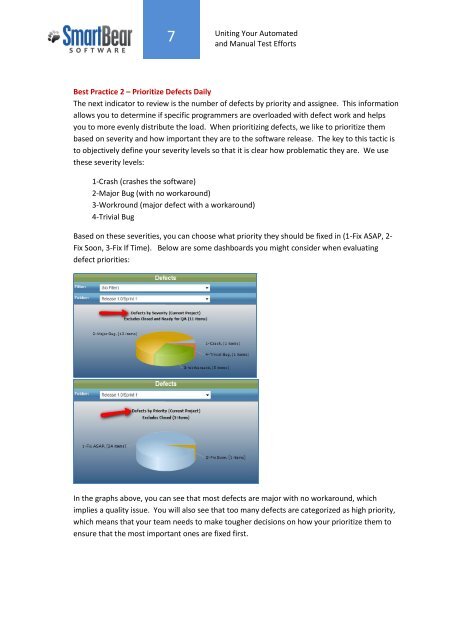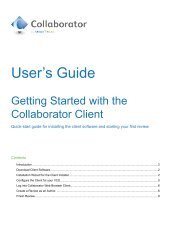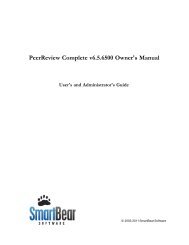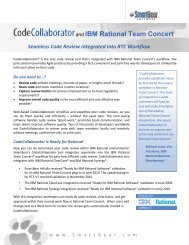Uniting Your Automated and Manual Test Efforts - SmartBear Support
Uniting Your Automated and Manual Test Efforts - SmartBear Support
Uniting Your Automated and Manual Test Efforts - SmartBear Support
You also want an ePaper? Increase the reach of your titles
YUMPU automatically turns print PDFs into web optimized ePapers that Google loves.
7<br />
<strong>Uniting</strong> <strong>Your</strong> <strong>Automated</strong><br />
<strong>and</strong> <strong>Manual</strong> <strong>Test</strong> <strong>Efforts</strong><br />
Best Practice 2 – Prioritize Defects Daily<br />
The next indicator to review is the number of defects by priority <strong>and</strong> assignee. This information<br />
allows you to determine if specific programmers are overloaded with defect work <strong>and</strong> helps<br />
you to more evenly distribute the load. When prioritizing defects, we like to prioritize them<br />
based on severity <strong>and</strong> how important they are to the software release. The key to this tactic is<br />
to objectively define your severity levels so that it is clear how problematic they are. We use<br />
these severity levels:<br />
1-Crash (crashes the software)<br />
2-Major Bug (with no workaround)<br />
3-Workround (major defect with a workaround)<br />
4-Trivial Bug<br />
Based on these severities, you can choose what priority they should be fixed in (1-Fix ASAP, 2-<br />
Fix Soon, 3-Fix If Time). Below are some dashboards you might consider when evaluating<br />
defect priorities:<br />
In the graphs above, you can see that most defects are major with no workaround, which<br />
implies a quality issue. You will also see that too many defects are categorized as high priority,<br />
which means that your team needs to make tougher decisions on how your prioritize them to<br />
ensure that the most important ones are fixed first.
















